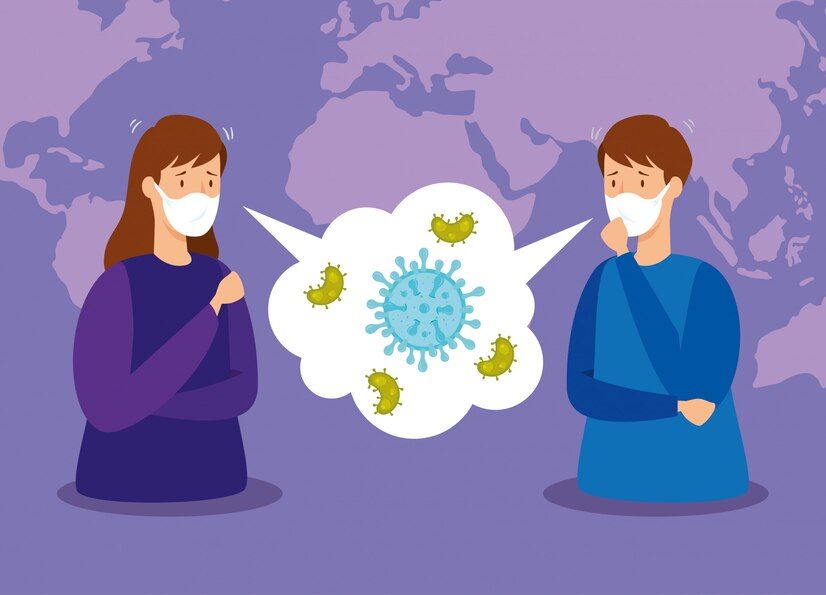
Get A Quote
What's the Difference Between Influenza A and Influenza B?
Let's dive into the world of influenza viruses with a whirlwind tour of types A and B, explore how they spread and discover the shared symptoms, and learn about effective treatment strategies and even the rare possibility of co-infections. Get ready for a concise, informative ride through the flu landscape!
 Different Types of Influenza Viruses
Different Types of Influenza Viruses
The influenza virus is categorized into four types: A, B, C, and D. Influenza A viruses are versatile, infecting various animals, including birds, mammals, and humans. They are identified by surface proteins, hemagglutinin (“H”) and neuraminidase (“N”), with 18 H subtypes and 11 N subtypes, resulting in 131 subtype combinations. Influenza B viruses exclusively affect humans and are categorized into B/Yamagata and B/Victoria lineages. Influenza C, while capable of infecting humans, usually causes mild illness and is not associated with widespread epidemics. On the other hand, Influenza D primarily affects cattle and is not known to impact humans.
What's the Difference Between Influenza A and Influenza B?
Influenza A and Influenza B, two distinct types of influenza viruses, exhibit notable differences in prevalence, impact on different age groups, and ease of control. Here are the details:
1. Prevalence:
- Influenza A is more common, accounting for approximately 75% of total influenza cases.
2. Epidemic and Pandemic Potential:
- Both Influenza A and Influenza B can cause outbreaks and epidemics.
- Only Influenza A has the potential to lead to pandemics, where the spread is uncontrolled and may become global.
3. Severity Across Age Groups:
- Influenza A tends to be more severe in adults.
- Influenza B is more common in children, with generally mild to moderate effects; however, it can be more severe in children under 5.
4. Seasonal Timing:
- Influenza A typically appears earlier in the flu season (January and February).
- Influenza B generally occurs later in the flu season (February and March).
5. Transmission Sources:
- Influenza A can move from animals, including birds, to humans.
- Influenza B develops only in humans.
6. Mutations and Vaccine Development:
- Influenza A mutates more quickly than Influenza B.
- The rapid mutation of Influenza A makes it harder to create vaccines that remain effective over time.
What Are the Symptoms of Influenza A and B?
Influenza A and B share similar symptoms, with severity varying from mild in many individuals to severe, particularly in high-risk groups such as pregnant people, adults over 64, children under 5 (especially infants), and those with underlying health conditions. While flu A is more common in infants, flu B is prevalent in school-age children. In most healthy children, both types result in mild to moderate symptoms, but flu B can lead to more serious symptoms in children under 5. For adults, flu A tends to be more severe. Symptoms usually begin suddenly with fever, followed by a range of manifestations, including dry cough, runny nose, sore throat, body aches, headache, and fatigue. Young children may also experience gastrointestinal symptoms like nausea, vomiting, or diarrhea alongside respiratory symptoms.
How Contagious Is Influenza A and B?
Both influenza A and B are highly contagious respiratory illnesses. The transmission occurs primarily through respiratory droplets when an infected person coughs or sneezes, with these droplets capable of entering another person's nose or mouth, leading to the spread of the virus. According to the Centers for Disease Control and Prevention (CDC), flu viruses can infect individuals within a radius of up to 6 feet from an infected person. Additionally, the flu can be contracted by touching a surface contaminated with the virus and subsequently touching the mouth or nose. The CDC emphasizes that individuals with the flu are most contagious during the 3–4 days after the onset of symptoms. Considering that symptoms may take 2 days to appear after infection, individuals may unknowingly transmit the virus before realizing they are sick.
 How to Treat Influenza A and B?
How to Treat Influenza A and B?
The treatment approach for both Influenza A and B is generally the same, with many individuals recovering on their own. If symptoms become bothersome, it is advisable to consult a healthcare provider who may recommend the following measures:
1. Over-the-Counter Medications:
Take over-the-counter cough or fever medicine as directed to alleviate symptoms. Caution should be exercised with children under age 6, and aspirin should be avoided in individuals under age 19.
2. Rest and Hydration:
Get plenty of rest and stay hydrated to support the body's recovery process.
3. Home Remedies:
Consider home remedies such as using honey for a sore throat and inhaling steam to alleviate nasal congestion. However, it is crucial to check with a healthcare provider before trying home remedies.
If symptoms appear severe, if you are pregnant, or if you are at high risk for complications (such as pneumonia), it is recommended to contact your healthcare provider promptly.
Can You Have Influenza A and B at the Same Time?
Yes, it is possible to have both influenza A and B simultaneously. Coinfection with multiple strains of the flu viruses is known to occur, although it is relatively uncommon. In such cases, individuals may experience a combination of symptoms associated with both influenza A and B. The presentation of dual infections can make the illness more challenging, as the viruses may affect different systems within the respiratory tract. While the symptoms are generally similar for both types, including fever, cough, and body aches, the severity and duration of the illness can vary.
Conclusion
In summary, different types of influenza viruses, A and B, present distinct characteristics in prevalence, severity, and pandemic potential. Additionally, this blog also helps us understand the symptoms and contagiousness of influenza A and B, as well as how to treat influenza A and B. Finally, we also explored the issue of co-infection with A and B. These understandings enables informed health decisions and contributes to minimizing the impact of influenza on public health. If you want to learn more about influenza knowledge, come to Aichek and consulate our experts!
